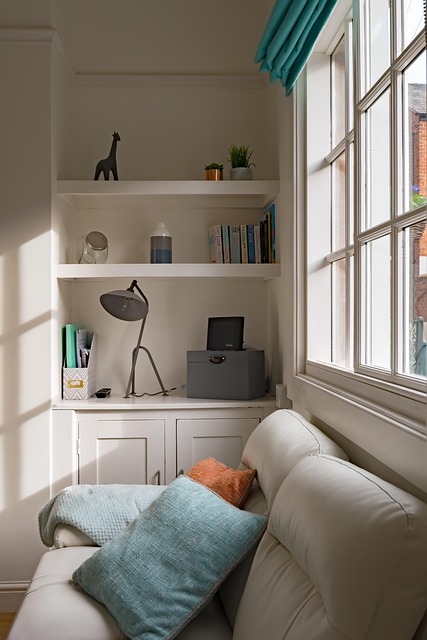Glulam (Glued Laminated Timber) is a revolutionary structural material in construction, known for its strength, efficiency, and eco-friendliness. Prefabrication capabilities, versatility, and rapid deployment make glulam an attractive solution for modern infrastructure projects, including bridges and high-rise buildings. Its unique properties offer long-term durability and reduced maintenance costs, catering to both residential and commercial needs while promoting sustainable building practices. With a promising future focused on sustainability, glulam is gaining popularity as a versatile, efficient, and environmentally responsible construction alternative.
“Discover the revolutionary world of Glulam—a structural building material transforming the construction industry. This article offers a comprehensive guide to glulam panels, exploring their unique advantages in high-performance applications. From enhanced structural integrity to sustainable benefits, we delve into the design and construction possibilities. Understand how glulam’s future prospects promise innovative solutions for environmentally conscious builders. By the end, you’ll grasp why this material is a top choice for modern architectural marvels.”
- Understanding Glulam: A Comprehensive Overview
- Advantages of High-Performance Glulam Panels
- Design and Construction Applications
- Sustainability and Future Prospects of Glulam
Understanding Glulam: A Comprehensive Overview
Glulam, short for Glued Laminated Timber, is a revolutionary structural material that has gained significant traction in the construction industry. It’s created by bonding together multiple layers of sawn timber with strong adhesives, resulting in incredibly strong and durable panels. This innovative process enhances the inherent natural strength and stiffness of wood, making glulam a sustainable and eco-friendly alternative for various applications, especially glulam for eco-friendly urban development.
The construction industry has embraced glulam for its exceptional performance in terms of glulam construction speed and efficiency. Unlike traditional building methods that can be time-consuming, glulam panels can be prefabricated off-site, allowing for faster assembly on-site. This streamlined process not only reduces construction timelines but also minimises waste, making it an attractive option for projects seeking cost-effectiveness and rapid deployment. Furthermore, glulam’s versatility extends to its use in bridge building, showcasing its importance in modern infrastructure development.
Advantages of High-Performance Glulam Panels
High-Performance Glulam Panels offer a multitude of advantages in construction and architecture. One of their key strengths lies in their ability to combine exceptional strength with remarkable versatility. These panels are engineered using laminated timber, known as glulam, which provides unparalleled structural integrity and load-bearing capacity. This makes them an ideal choice for both residential and commercial projects, enabling designers and architects to create unique and visually appealing structures.
Moreover, glulam architectural elements not only enhance the structural capabilities of buildings but also contribute to sustainable building practices. As renewable and eco-friendly materials, glulam solutions for complex geometry offer a lower environmental impact compared to traditional construction methods. Their longevity and durability further reduce waste and maintenance costs over time, making them a cost-effective and sustainable choice for modern construction.
Design and Construction Applications
High-performance glulam panels offer a wide range of design possibilities for architects and engineers. Their versatility allows for innovative structural solutions in both residential and commercial projects, including the construction of cultural centers, bridges, and even high-rise buildings. Glulam’s strength-to-weight ratio and aesthetic appeal make it an ideal material for creating open, column-free spaces.
When it comes to glulam applications, cultural centers stand out as a prime example. These structures often require large, span-wide areas for exhibitions, performances, or gatherings, and glulam panels can accommodate these needs while adding a touch of modern elegance. Standard glulam panel dimensions and specifications vary based on the intended use and load requirements but generally offer customization options to meet specific design challenges.
Sustainability and Future Prospects of Glulam
The future of glulam looks bright, driven by a growing awareness of sustainability in the construction industry. As a highly efficient and eco-friendly glulam alternative, its use is expected to rise as architects and builders seek sustainable building solutions. The traditional timber panels are being replaced with modern glulam panelization techniques that offer enhanced structural integrity and superior design flexibility.
The focus on reducing carbon footprints and minimizing waste has positioned glulam as a viable option for green buildings. Its production process, which leverages reclaimed wood sources, reduces the environmental impact compared to conventional materials. With various glulam panel dimensions and specifications available, this versatile building component can be tailored to meet the unique needs of any project while ensuring rapid construction and long-lasting durability.
High-performance glulam panels offer a revolutionary approach to construction, combining strength, durability, and environmental sustainability. As we’ve explored through this comprehensive guide, glulam’s unique structural properties make it an ideal solution for modern architectural designs and sustainable building practices. With ongoing advancements in manufacturing techniques, the future of glulam looks promising, positioning it as a game-changer in the industry. By embracing these innovative materials, architects and builders can create stunning structures that stand the test of time while minimizing environmental impact.







